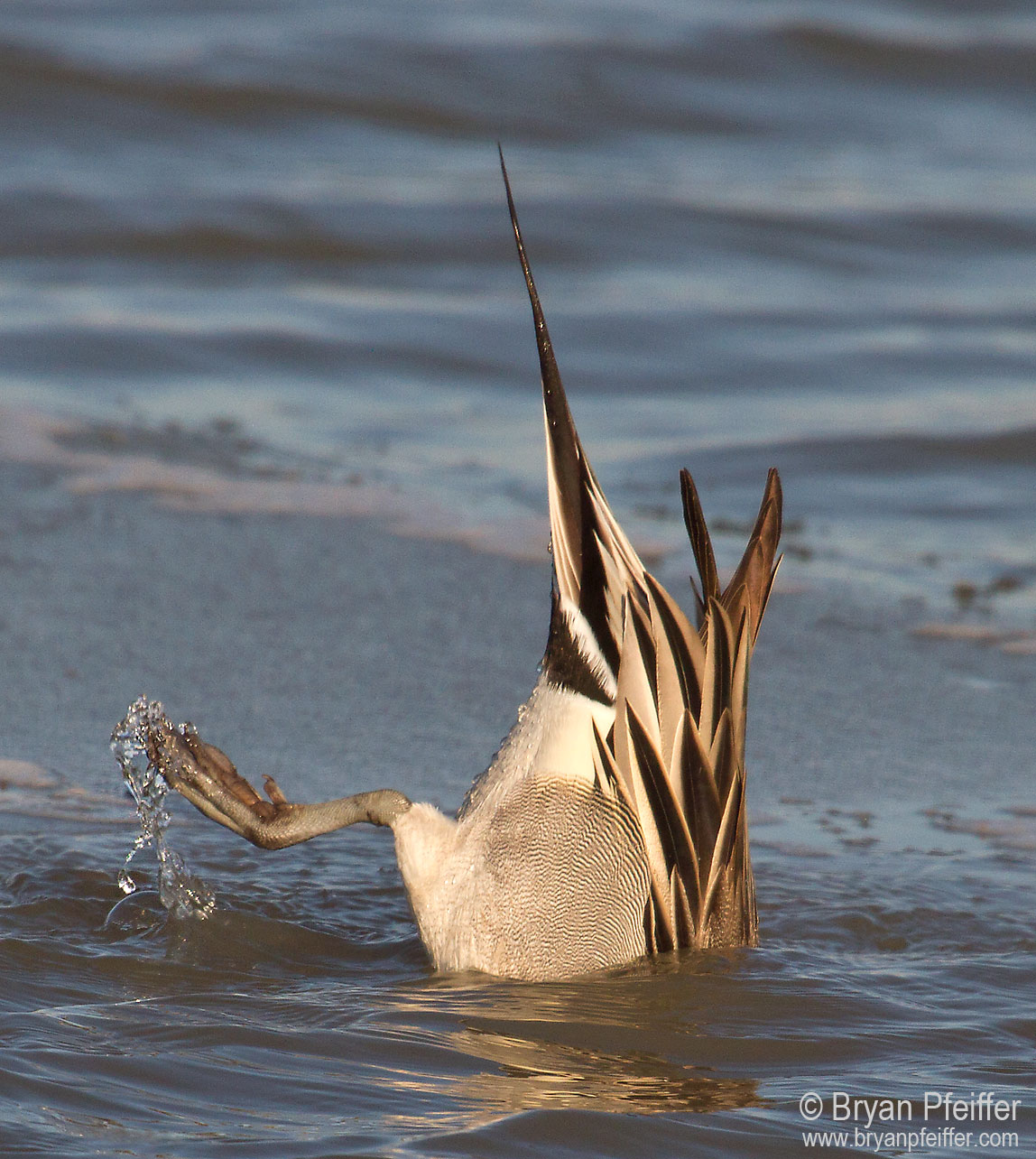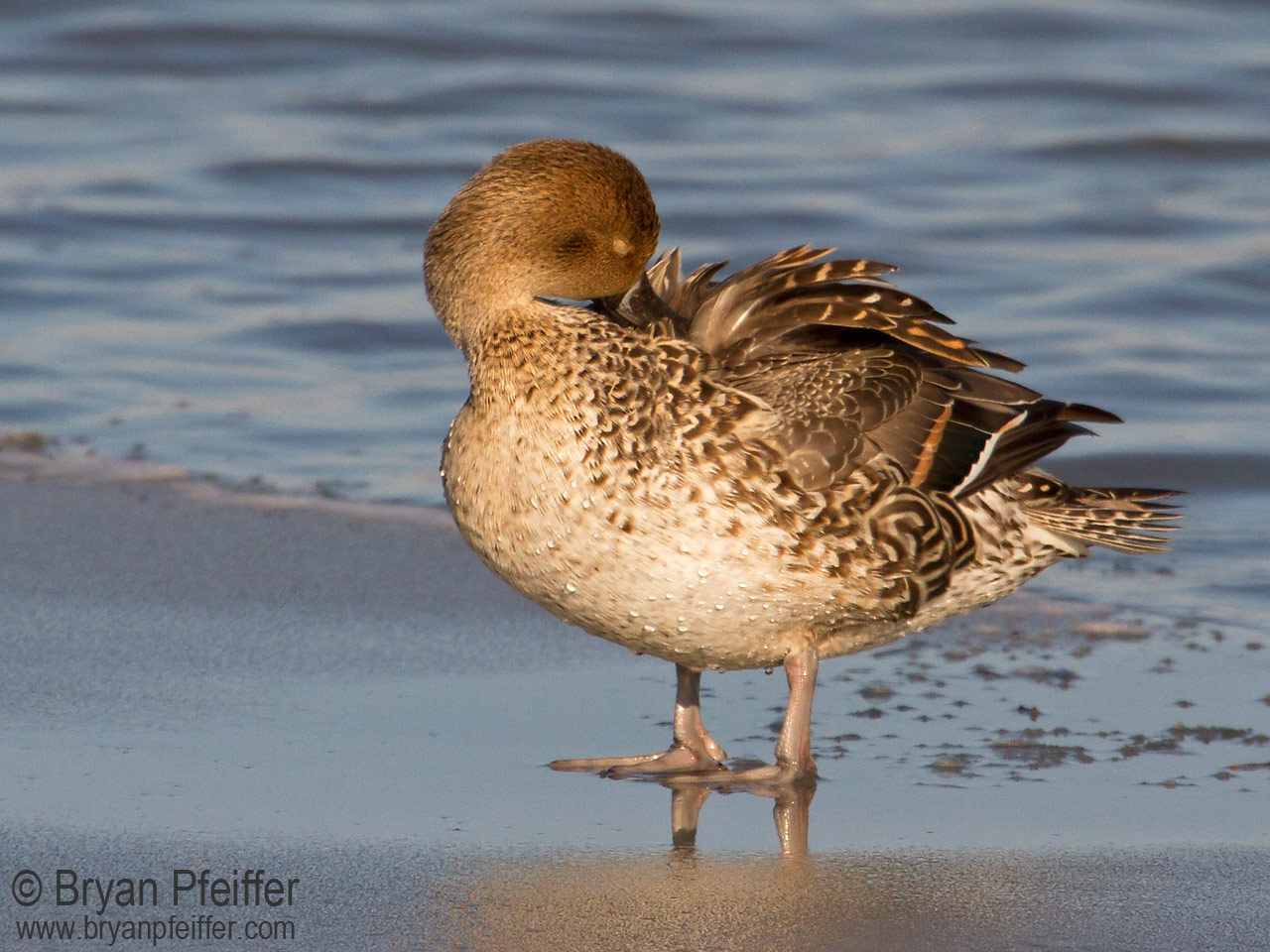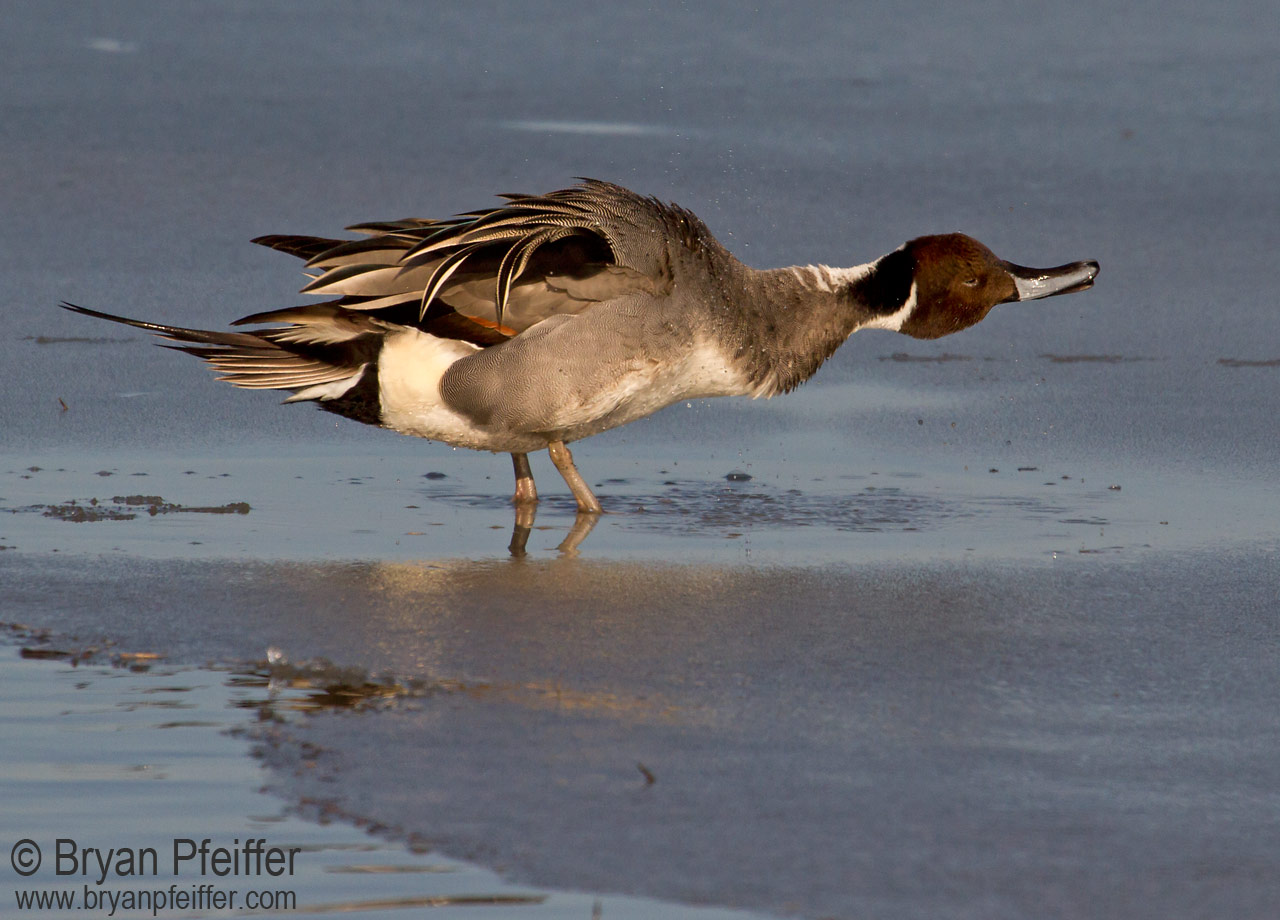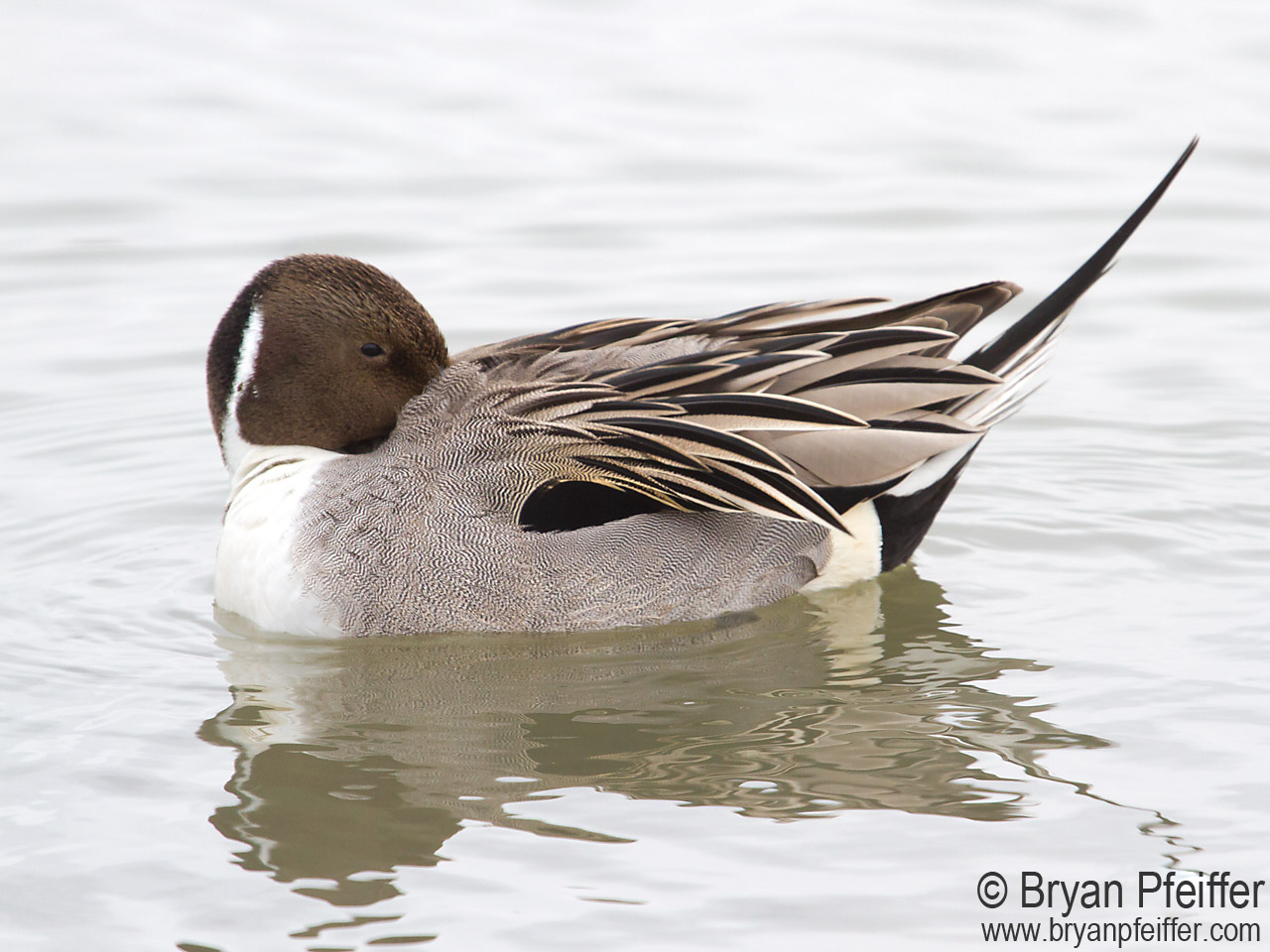Better Know A Duck: Northern Pintail
“Hey, listen,” I said. “You know those ducks in that lagoon right near Central Park South?
That little lake? By any chance, do you happen to know where they go, the ducks, when it gets all frozen over?
Do you happen to know, by any chance?”
I realized it was only one chance in a million.
Holden Caulfield,
The Catcher in the Rye, J.D. Salinger
CAN WE REALLY KNOW A DUCK? Ducks are so … out there. Yeah, out on the water, far away from us. But ducks are “out there” in other ways.
First, they’re courting now. Yeah, in the cold. And when they finally breed in spring, well, it’s kind of violent and twisted. And after the female lays eggs, the males blows town. Gone. Deadbeat dad.
But you gotta love Northern Pintail. You may think you know pintail. It’s the elegant one, with the graceful neck and pointy tail. You may know his blue bill and graceful white swoosh. But in these images — from Bosque Del Apache National Wildlife Refuge, on the Rio Grande in New Mexico on Saturday— I’ve captured a few things you may not have noticed about Northern Pintail.
First, in the image above, check out that soft rosy glow toward the back of the male’s head — kind of like a raspberry swirl in the chocolate. Also, in this light we get a spectacular peek at his speculum, which normally doesn’t display this green. No, not that kind of speculum — the good kind, the set of inner wing feathers that are often iridescent or shocking colors on ducks, parrots and some other birds. (By the way, this bird has a US Fish and Wildlife Service leg band whose first three digits are “114”.)
Pintails raise those two pointy central tail feathers when they’re courting (and doing lots of other things, like feeding, of course). Courtship also include wing-preening, which amounts to speculum flashing to the opposite sex. Males and females also engaged in synchronous head bobbing and dipping. And males also do a lot of “grunt-whistling” and burping, which can be a turn-on for females. Pintails, that is.
Now, in the series of images below, first check out the preening female, exposing her row of chestnut-tipped median wing coverts. You can see that same chestnut “wing bar” in the next image of the male shaking like a dog just out of water. You’ll see the chestnut again in the next shot of a male taking off (note to photographers: if only the light wasn’t so horrible for that shot). In these images of the male, his speculum doesn’t scatter much light at all (because there wasn’t any!) — so the speculum looks black. It’s structural color.
Finally, at the end, juxtaposed against the elegance of these Northern Pintails, I give you the fullback of ducks, the bulldozer of ducks, Northern Shoveler. If not the shovel, you must at least love his legs.
[For more good stuff like this, sign up for my email newsletter Natural Selections, which features occasional news from the frontiers of wildlife science and from my own adventures in wild places.]








Thanks, Sue!
Thanks, Karen. Your American Kestrel is wonderful!
Anytime, Linda!
Thanks, Jim!
Now, if we can just do something about February. 🙂
Thanks, Judy. I’ll bet you’ve got ’em close to home.
Thanks, Jo!
Thanks, Ginny. Yep, our possibilities are endless. And you’re right, Shovelers are kind of loveable — like big, goofy dogs. 🙂
Beautiful photos, Bryan. I’m sad to say that I have never noticed the raspberry swirls, the green or the chestnut colors on a Pintail. I will certainly be looking more closely when I see them again! Your information is greatly appreciated. It’s the little things we overlook in life that are often the most beautiful. Now, who couldn’t love a Shoveler? They always make me smile 🙂 .
You are a photographer extraordinaire. Thank you for this. Great reading and learning, especially appreciated when cabin fever strikes.
What elegant ducks! …and beautiful photos. Thank you, Bryan
So, so interesting. Keep it up. You are making Jan. fly by a little faster, here in DM.
Great stuff Bryan.
Lovely, Bryan. Thanks for sharing these.
Excellent photos and information. Thanks!
Wonderful photos! Like the info too.